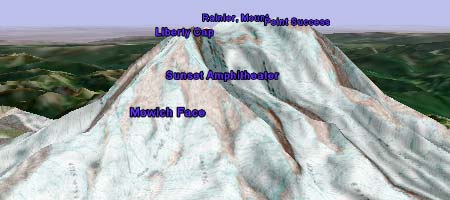Geeks loving Google Earth is all good and well, but it’s when the cool people embrace Google Earth that you know the meme has legs.
Or in this case, wheels. Longskate afficionado Pappy Boyington has a blog that documents the best longskate runs in Paris. To document the ride, he uses screen captures of a Google Earth view onto which he has overlaid a layer from a Google Maps-like French mapping service. The result is clean and clear, and provides an interesting alternative to the European road overlays already in Google Earth and the hybrid view in Google Maps (which doesn’t work in Europe).
I’ve wondered before what it would look like to replace the satellite images used in Google Earth with the maps images from Google Maps — and then turning on terrain so that the effect is that of a 3D map. For places like Sydney or San Francisco, such maps would be of far greater value than the 2D Google Maps version for pedestrians, cyclists or the wheelchair-bound. Not to mention longskaters.
Turning such views into something that is dynamically generated looks like an insurmountable challenge for hackers, though. It might have to be something best left for Google.



